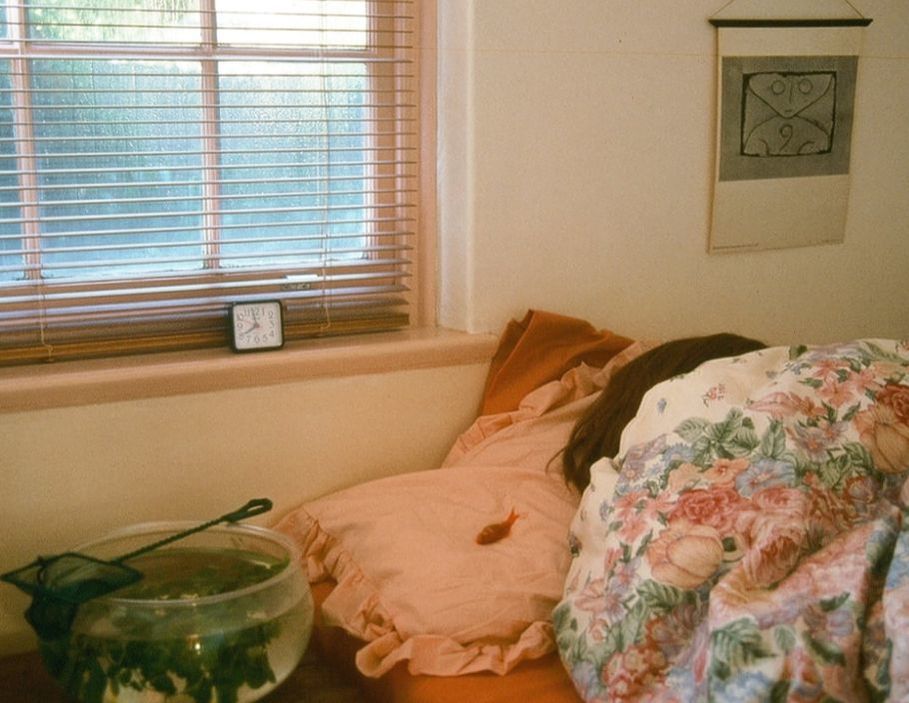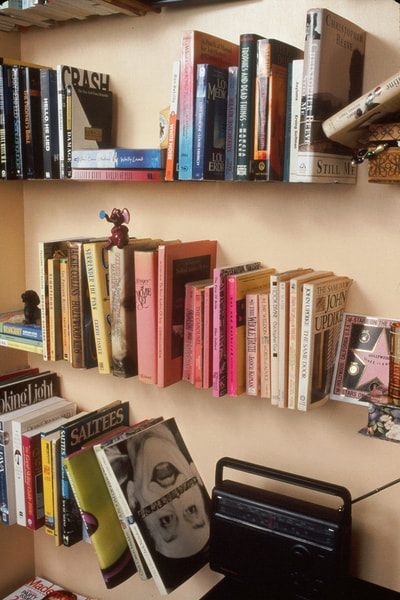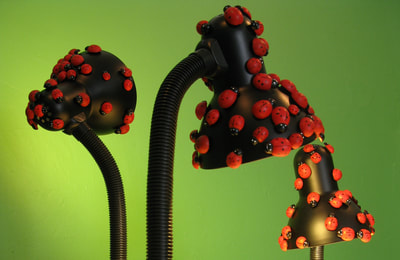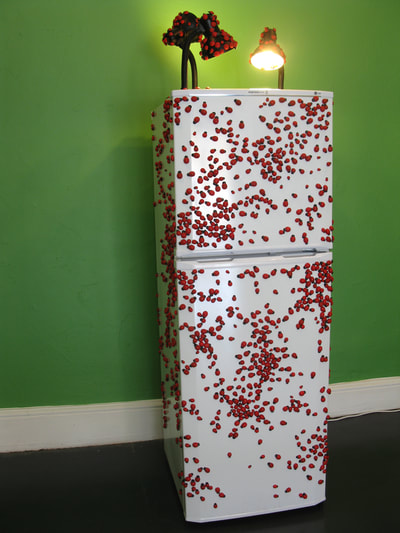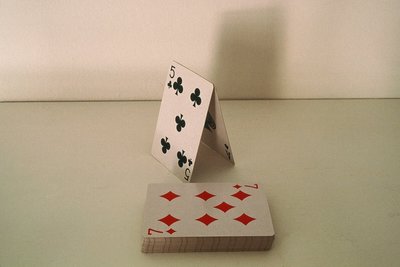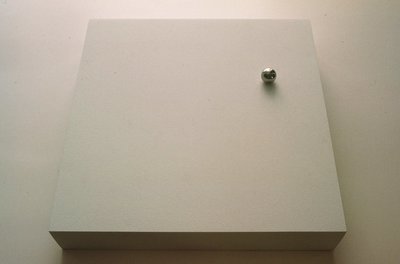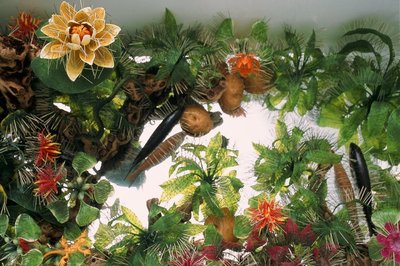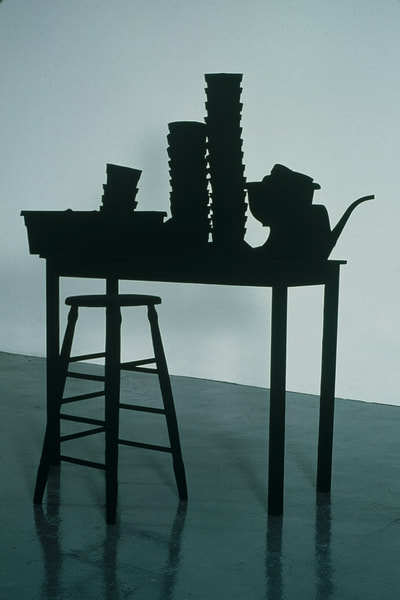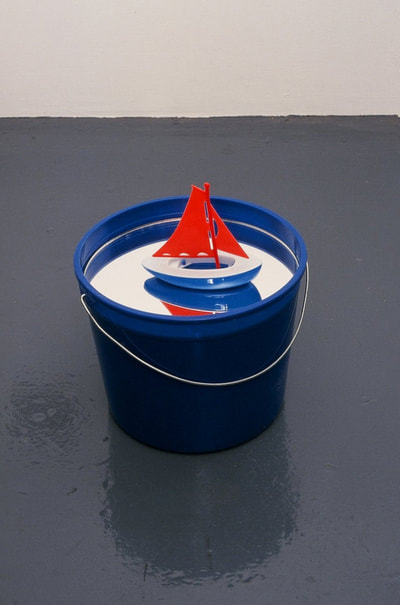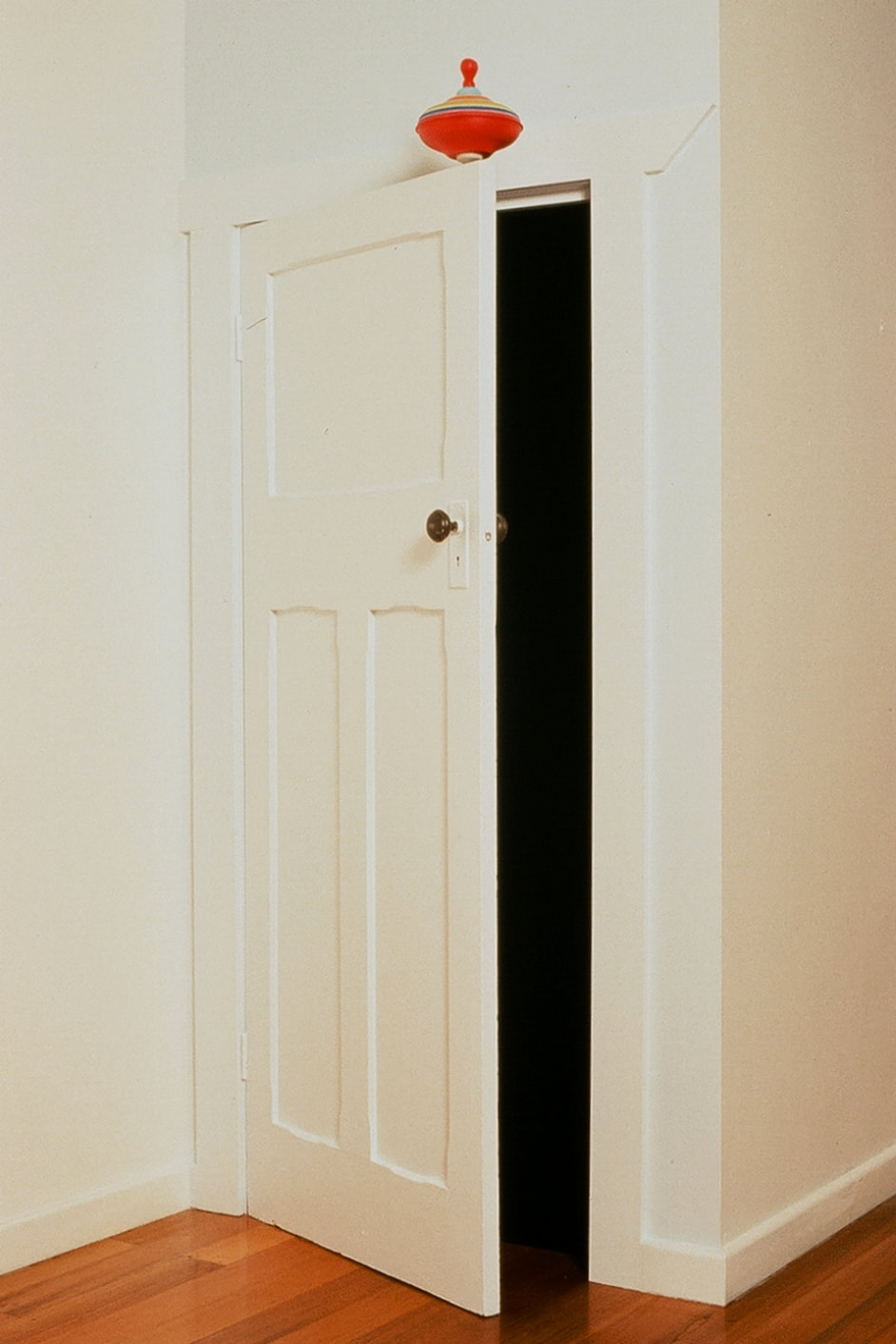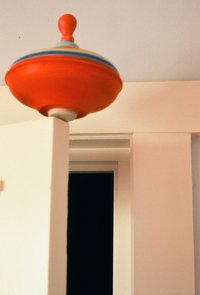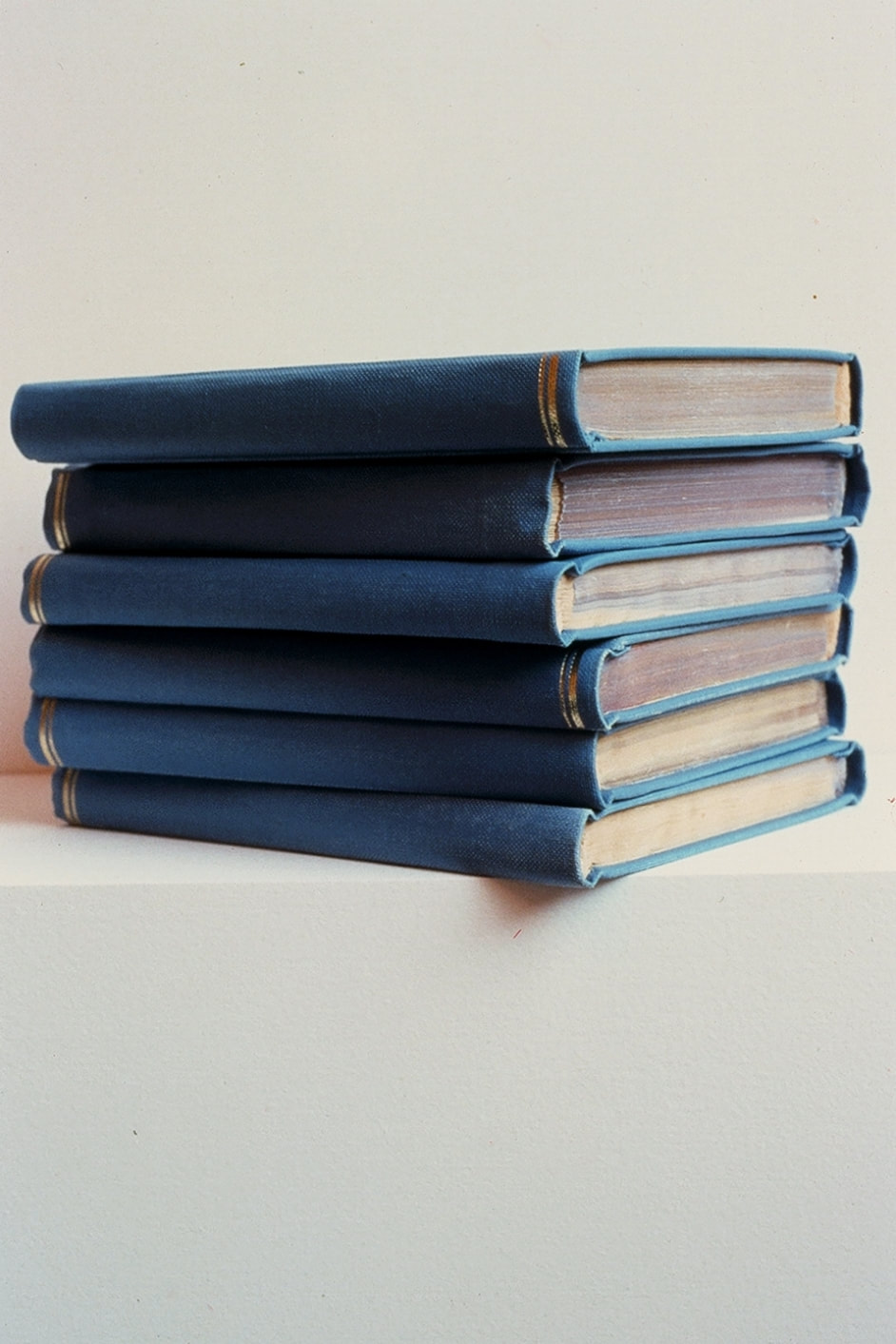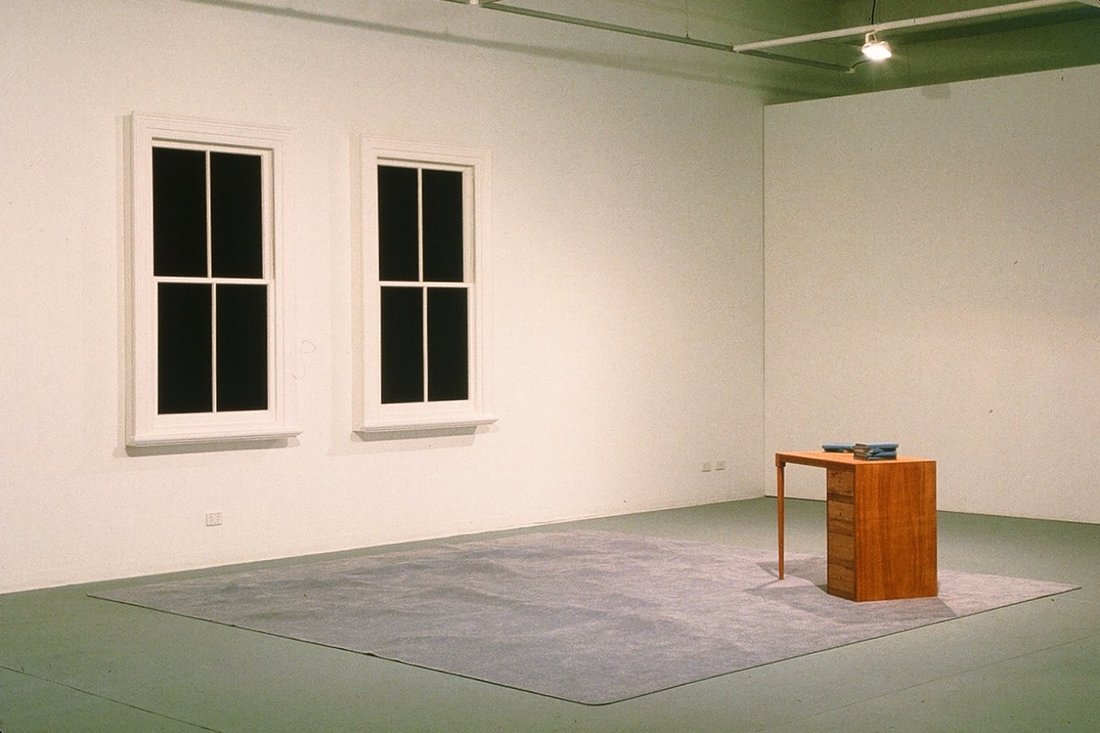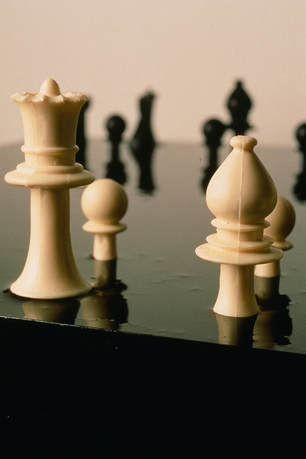|
The fearful and the uncanny, are more directly referred to in Sally-Ann Rowland’s work, and we are returned to that time when the world is most animate, as we have not yet made the psychological separation between us and it – that in theory, comes later as we coalesce into ‘self’ – so everything in the world is possessed with a weird volition as it may be part of us. Here there are definite echoes of Freud’s vast oceanic feeling as we are presented with an open door with a spinning top balanced on it, poised to tumble if some one, some thing, something unknown and scary should push the door further ajar to gain access to our room. Such clever trickery and clever trappery should make us feel secure as we huddle (in memory) under the bedclothes transfixed upon this awful crack, until we realise that this Burglar Alarm is a fake: a top cannot remain upright unless it is spinning and here there is no movement. If it can’t rotate can it fall? That this is becoming some frozen interdimensional threat is reinforced by the hard and solid velvet darkness behind the door, a chthonic other made concrete and dense … Richard Grayson, ‘Doctorin’ the TARDIS’, Contemporary Art Centre of South Australia, 2000
|
There are double-spined books on the desk. The desk drawers have had their handles removed and can’t be opened. The top drawer is slightly open but can’t be opened further to reveal what’s inside. The windows are opaque – dark blue velvet – their sills are covered in white felt. The slightly open drawer suggests a secret there to be shared, but it won’t talk. The carpet muffles the space, the possibility of revelation via the window is thwarted. The room seems empty but is actually occupied. It’s a metaphor for the mind – one never thinks about nothing, and while the space may look normal, there is much happening and much to hide …
The materiality of Rowland’s work never obscures the possibility of metaphor. Objects are never simply, enigmatically, only what they are. The first encounter with the work is easy – well-known objects. But they’re clues to a riddle, and she finely balances the game for the viewer. The objects suggest a process in which defeat is rendered inherent, and then, individually, suggest other meanings … Each object is employed symbolically in a process. These objects are not merely recontextualised – it’s the purpose, the process, inherent in each object that we are being shown. We’re offered an object we could potentially use but can’t because the uses inherent in the object have been defeated. The failed process is itself a metaphor … Rowland’s art recalls the Taoist axiom: ‘He who acts, spoils; he who grasps, lets slip’. Chris Reid, ‘Sally-Ann Rowland: The Allegorical Imagination’, Broadsheet, 2000
The materiality of Rowland’s work never obscures the possibility of metaphor. Objects are never simply, enigmatically, only what they are. The first encounter with the work is easy – well-known objects. But they’re clues to a riddle, and she finely balances the game for the viewer. The objects suggest a process in which defeat is rendered inherent, and then, individually, suggest other meanings … Each object is employed symbolically in a process. These objects are not merely recontextualised – it’s the purpose, the process, inherent in each object that we are being shown. We’re offered an object we could potentially use but can’t because the uses inherent in the object have been defeated. The failed process is itself a metaphor … Rowland’s art recalls the Taoist axiom: ‘He who acts, spoils; he who grasps, lets slip’. Chris Reid, ‘Sally-Ann Rowland: The Allegorical Imagination’, Broadsheet, 2000
|
Stalemate … comprises a steel box that stands on the floor. The top of the box is a basin 2cm deep filled with treacle, which appears continuous with the sides of the box. It looks completely solid at first glance – the treacle is the same shiny black as the box. In the treacle stands a chess set, minus Kings and Kings’ pawns, ready for commencement. This chess game is a hopeless non-event. With no Kings to checkmate, the game is purposeless Chris Reid, ‘Sally-Ann Rowland: The Allegorical Imagination’, Broadsheet, 2000
|
Proudly powered by Weebly

